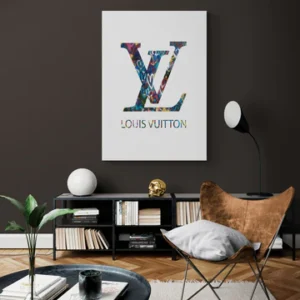In a world where first impressions matter, packaging plays a crucial role in how products are perceived. If you’re looking to make a splash in the market, design glass bottles can be a game-changer. Whether for beverages, perfumes, or cosmetics, custom-designed glass bottles can elevate your brand and attract more customers. So, how do you go about creating unique designs that captivate your audience? Let’s dive into the exciting world of glass bottle design!
Understanding the Basics of Glass Bottle Design
Before you start sketching out your design, it’s essential to understand the types of glass bottles available and their uses. Glass bottles come in various shapes, sizes, and colors, each serving different purposes. Here are a few common types:
- Cosmetic Bottles: Often sleek and stylish, these bottles are designed for lotions, serums, and perfumes.
- Beverage Bottles: Commonly used for drinks, they can vary from soda bottles to wine bottles.
- Food Jars: These include jars for sauces, jams, or other food items, typically designed to preserve freshness.
- Decorative Bottles: These bottles may not have a functional purpose but are designed for aesthetic appeal, often used in home decor.
Once you understand the purpose of your bottle, you can start thinking about your design!
Tips for Designing Glass Bottles
1. Research and Inspiration
Before you start designing, it’s vital to research existing glass bottle designs. Look at competitors and analyze what works and what doesn’t. Websites like Pinterest or Behance are great platforms to gather inspiration. Pay attention to colors, shapes, and labeling techniques.
Actionable Tip: Create a mood board with images, colors, and designs that resonate with your vision. This will help you visualize your ideas and serve as a reference throughout the design process.
2. Define Your Brand Identity
Your glass bottle design should reflect your brand’s identity. Consider the following questions:
- What message do you want to convey?
- Who is your target audience?
- What emotions do you want your design to evoke?
For instance, if you’re targeting a luxury market, opt for elegant designs with muted colors and sophisticated typography. If your audience is more youthful and energetic, go for bold colors and playful shapes.
3. Choose the Right Shape and Size
The shape and size of your bottle can significantly impact its appeal. A unique shape can make your product stand out on the shelves, while the size can determine how easy it is for customers to use and carry.
Actionable Tip: Consider practicality. A bottle that’s too large may be cumbersome for consumers, while one that’s too small might not hold enough product. Find a balance that works for your specific product.
4. Color Selection
Color plays a pivotal role in design and can greatly influence consumer behavior. Certain colors evoke specific feelings and associations. For example:
- Green: Freshness and nature.
- Blue: Trust and dependability.
- Red: Passion and excitement.
When designing your glass bottles, choose colors that align with your brand identity and resonate with your target audience.
5. Labeling and Branding
Your label is where you communicate your brand’s story and product information. Ensure your label design is not only visually appealing but also easy to read. Consider the following elements:
- Typography: Choose fonts that reflect your brand’s personality. Avoid overly complicated fonts that might be hard to read at a glance.
- Material: The type of label material can affect durability and appearance. For example, waterproof labels are essential for beverage bottles.
- Information: Include necessary information such as ingredients, usage instructions, and brand story, but keep it concise.
Actionable Tip: Test your label design by printing it out and placing it on a bottle. This will give you a real-world view of how it looks and feels.
6. Sustainability Considerations
With increasing awareness about environmental issues, many consumers prefer sustainable packaging options. Design glass bottles with sustainability in mind can set your brand apart. Consider using recycled glass or creating bottles that can be reused or refilled.
Actionable Tip: Highlight your sustainable practices on your label or marketing materials to attract eco-conscious consumers.
7. Prototype and Test
Once you have a design in mind, create a prototype of your glass bottle. This is a crucial step in ensuring that your design works in practice. You can use 3D modeling software or collaborate with a manufacturer who can produce a small batch for testing.
Actionable Tip: Conduct market research by sharing prototypes with potential customers. Gather feedback on the design, usability, and overall appeal. This step can save you time and money by addressing issues before mass production.
8. Work with Professionals
If you find the design process overwhelming, consider collaborating with professional designers. They can provide valuable insights and expertise, ensuring your vision becomes a reality. Look for designers who specialize in product packaging or have experience with glass bottle design.
Actionable Tip: Share your mood board and brand identity with the designer to ensure they understand your vision.
9. Stay Current with Trends
The world of design is always evolving. Stay updated on current design trends to keep your glass bottles fresh and appealing. Follow industry blogs, attend design fairs, or join design communities online to learn about the latest trends.
Actionable Tip: Consider seasonal updates to your design to keep your product feeling relevant and exciting.
10. Launch and Gather Feedback
Once your glass bottles are ready for market, launch them with a marketing strategy that highlights their unique design and benefits. Encourage customers to provide feedback on their experience with the product and packaging. Use this information to improve future designs.
Actionable Tip: Use social media to engage with your audience and gather feedback. Create polls or ask questions about what they love or want to see improved.
Conclusion
Designing glass bottles can be a rewarding venture that allows you to express creativity while building a strong brand identity. By following these tips and embracing the process, you’ll be well on your way to creating glass bottles that not only stand out but also resonate with your audience. Remember, your design should tell a story and connect with consumers on a personal level.
Happy designing!





More Stories
Louis Vuitton Wall Art: The Ultimate Statement in Luxury Interior Decor
How to Choose the Right Wedding Photographer in Denver Without Stress
What to Know Before Hiring a Gutter Company in Gainesville FL: A Friendly Guide